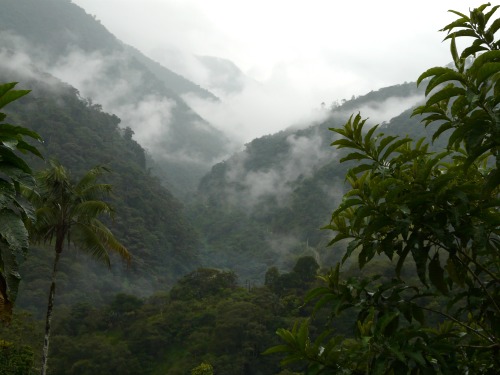The differences however are significant, and are most deeply reflected in the totally different species found in a lowland forest as compared with high elevation cloud forest. Ecuador is the most biodiverse country on the planet, boasting over 1600 species of birds, the highest number of bird species per square kilometer of any country in the world. A bird list or mammal list from a lodge / reserve in Ecuador´s Amazon basin, shares few species with a lodge / reserve in Ecuador´s northwest cloud forest. The same is true of orchids, butterflies, moths and so much more. Just as an example, in the private Bellavista Cloud Forest Reserve in 2015, 70 new species of Noctuidae moths were identified to science in just nine months!
Another significant difference is that lowland forests, notably Amazon forests, are generally much flatter, and so the canopy tends to be closed. As a result, the forest floor is frequently quite open, and young trees need light gaps created by fallen trees to start their push to grow up towards the light of the forest canopy. Higher elevation Andean cloud forests on the other hand, often have steep slopes, so the canopy is much more open, and vegetation on the forest floor flourishes.

So, if you want to see the most species, it is best to visit both ecosystems. But if you like hummingbirds and you prefer cooler weather, a cloud forest visit might suit you more, and you would only need to travel an hour or two from Quito to get into one, such as Bellavista. In Peru, the cloud forests are farther away. You can do a trip from Cusco to the cloud forest only in Manu, or you can do a combination trip to cloud forest and lowland forest in Manu. You can also visit a cloud forest in the Chachapoyas region of northern Peru, but it takes a while to get to there.

 RSS Feed
RSS Feed
